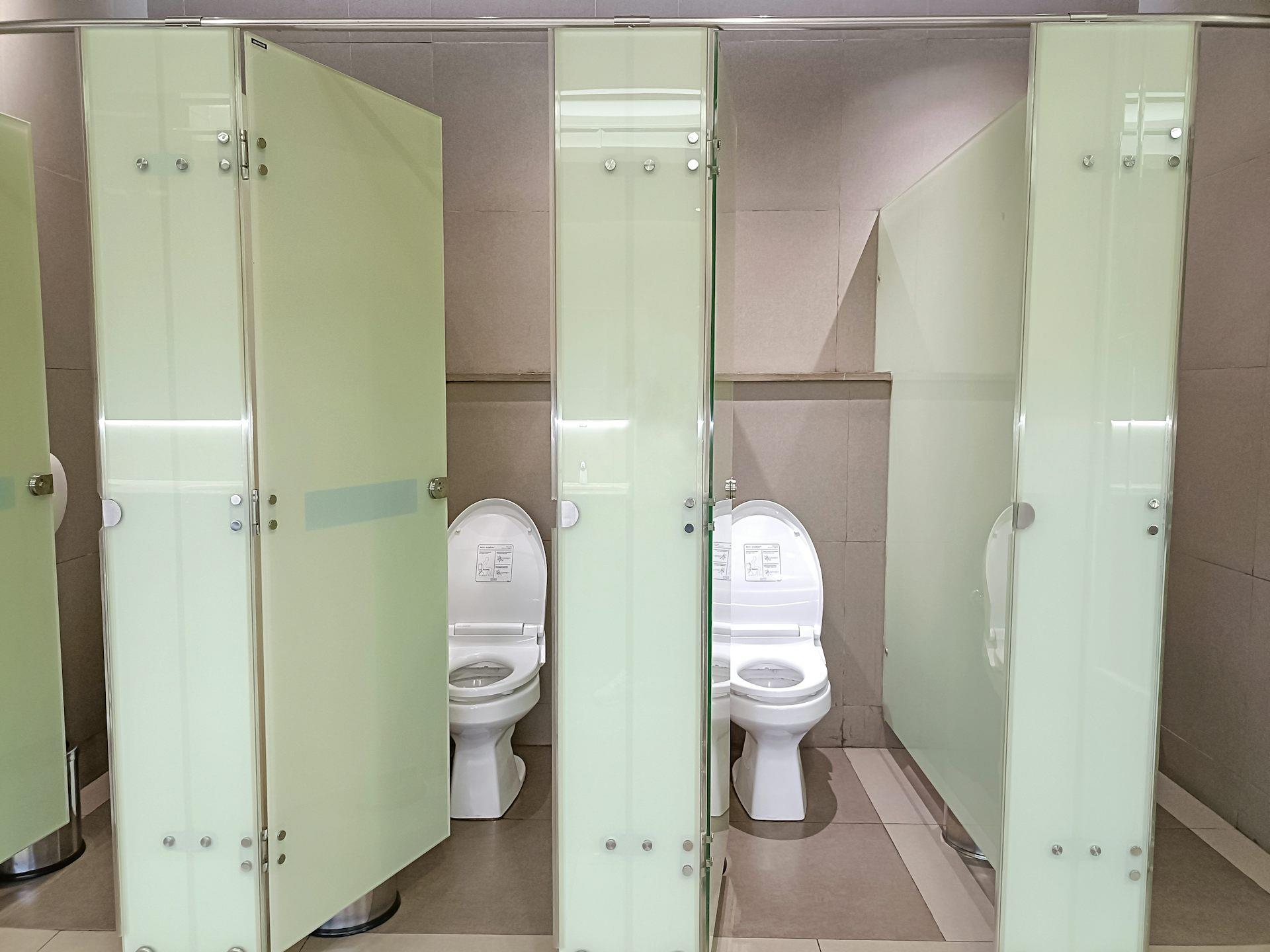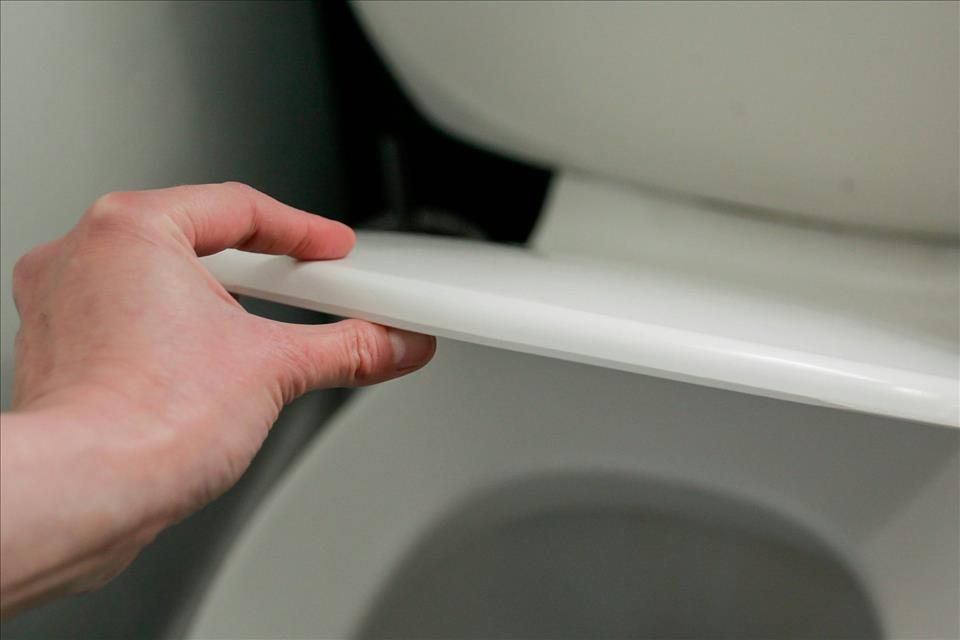
Is It OK To Sit On Public Toilet Seats?
But sometimes, you don't have a choice and have to use a toilet that looks like it hasn't been cleaned in weeks. Do you brave it and sit on the seat?
What if it looks relatively clean: do you still worry that sitting on the seat could make you sick?
What's in a public toilet?Healthy adults produce more than a litre of urine and more than 100 grams of poo daily. Everybody sheds bacteria and viruses in faeces (poo) and urine, and some of this ends up in the toilet.
Some people, especially those with diarrhoea , may shed more harmful microbes (bacteria and viruses) when they use the toilet.
Public toilets can be a“microbial soup”, especially when many people use them and cleaning isn't frequent as it should be.
What germs are found on toilet seats?Many types of microbes have been found on toilet seats and surrounding areas. These include :
-
bacteria from the gut, such as E. coli, Klebsiella, Enterococcus, and viruses such as norovirus and rotavirus . These can cause gastroenteritis , with bouts of vomiting and diarrhoea
bacteria from the skin, including Staphylococcus aureus and even multi-drug resistant S and other bacteria such as pseudomonas and acinetobacter. These can cause infections eggs from parasites (worms) that are carried in poo, and single-celled organisms such as protozoa . These can cause abdominal pain.
There's also something called biofilm , a mix of germs that builds up under toilet rims and on surfaces.
Are toilet seats the dirtiest part?No. A recent study showed public toilet seats often have fewer microbes than other locations in public toilets, such as door handles, faucet knobs and toilet flush levers. These parts are touched a lot and often with unwashed hands.
Public toilets in busy places are used hundreds or even thousands of times each week. Some are cleaned often, but others (such as those in parks or bus stops) may only be cleaned once a day or much less, so germs can build up quickly. The red flags that a toilet hasn't been cleaned are the smell of urine, soiled floors and what is obvious to your eyes.
However, the biggest problem isn't just sitting: it's what happens when toilets are flushed. When you flush without a lid, a“toilet plume” shoots tiny droplets into the air. These droplets can contain bacteria and viruses from the toilet bowl and travel up to 2 metres .
Here's what the toilet plume looks like.
Hand dryers blowing air can also spread germs if people don't wash properly. As well as drying your hands, you might be blowing germs all over yourself, others and the bathroom.
How can germs spread?You can pick up germs from public toilets in several ways:
-
skin contact. Sitting on a dirty seat or touching handles spreads bacteria. Healthy skin is a good barrier, but cuts or scrapes can allow germs to enter
touching your face. After using the toilet, if you touch your eyes, mouth, or food before washing your hands, germs can get inside your body breathing them in. In small or crowded bathrooms, you can breathe in tiny particles from toilet plumes or hand dryers
toilet water splash. Germs can stay in the water even after several flushes.

Seats aren't the dirtiest part of a public toilet. fadfebrian/Getty Images What can you do to stay safe?
Here are some easy ways to protect yourself:
-
use toilet seat covers or place toilet paper on the seat before sitting
if the toilet has a lid, wipe it before use with an alcohol wipe and close it before flushing to limit toilet plume exposure. (But note, this doesn't fully stop the spread) wash your hands properly for at least 20 seconds using soap and water
carry hand sanitiser or antibacterial wipes to clean your hands afterwards if there isn't any soap avoid hand dryers, if you can, as they can spread germs . Use paper towels instead
sanitise your phone regularly and don't use it in toilet. Phones often pick up and carry bacteria , especially if you use them in the bathroom clean baby changing areas before and after use, and always wash or sanitise your hands.
For most healthy people, yes – sitting on a public toilet seat is low-risk. But you can wipe it with an alcohol wipe, or use a toilet seat cover, for peace of mind.
Most infections don't come from the seat itself, but from dirty hands, door handles, toilet plumes and phones used in bathrooms.
Instead of worrying about sitting, focus on good hygiene. That means washing your hands, opting for paper towel rather than dryers, cleaning the seat if needed, and keeping your phone clean.
And please, don't hover over the toilet. This tenses the pelvic floor , making it difficult to completely empty the bladder. And you might accidentally spray your bodily fluids.

Legal Disclaimer:
MENAFN provides the
information “as is” without warranty of any kind. We do not accept
any responsibility or liability for the accuracy, content, images,
videos, licenses, completeness, legality, or reliability of the information
contained in this article. If you have any complaints or copyright
issues related to this article, kindly contact the provider above.
















Comments
No comment